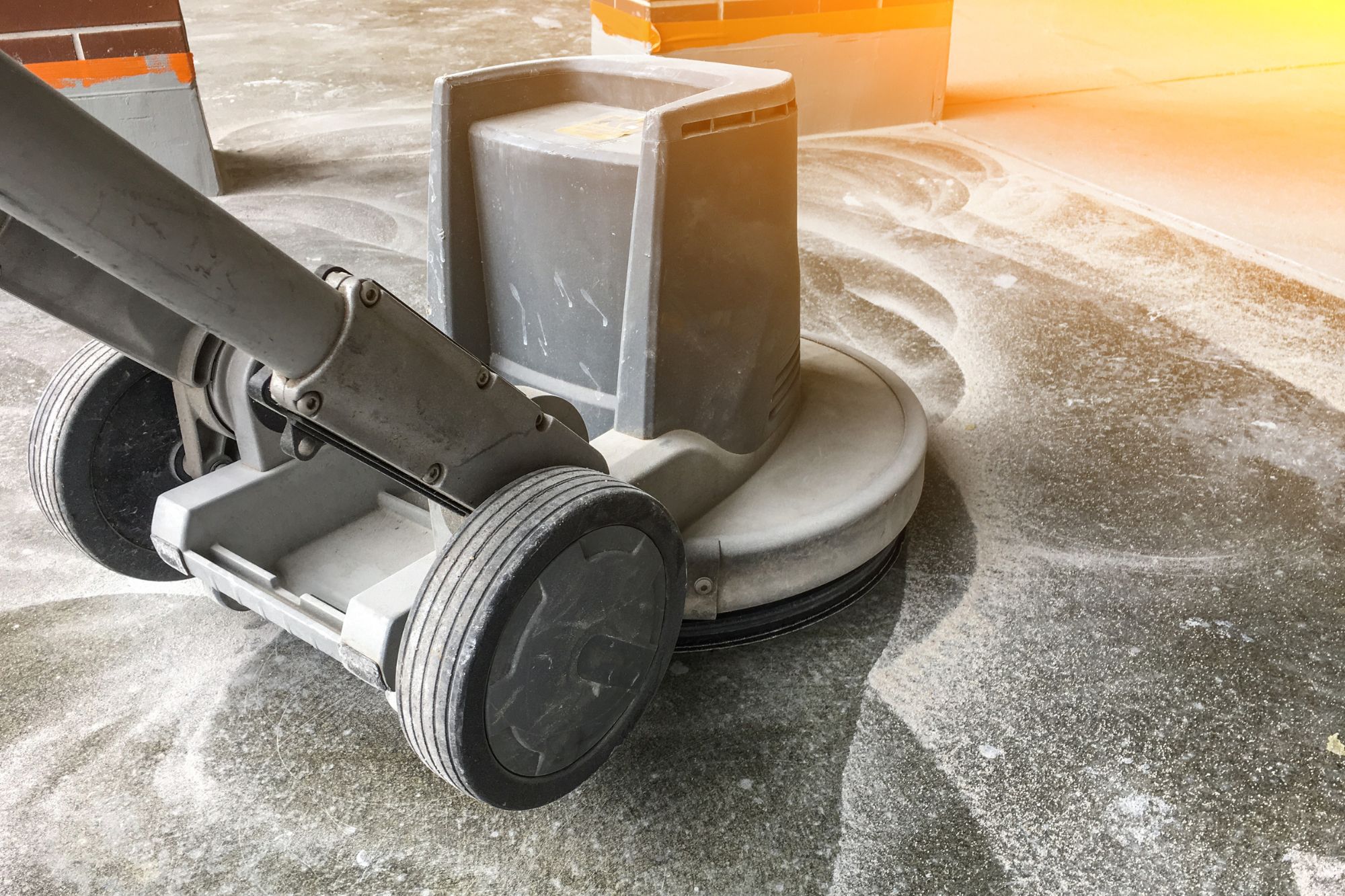posted by Custom Coatings, Inc. on September 27th, 2022
Grind and Seal vs Grind and Polish: Which Is Better?
Floors contribute to more than 2 million falling injuries per year. Dangerous flooring, including broken or uneven floors, is one of the main reasons that these injuries occur.
For this reason, it may be a good idea for you to replace your commercial building’s current floors with smooth concrete ones. However, if you look up commercial concrete floors, you’ll notice that they’re not all the same. You may also have trouble understanding the differences between the two main types.
This article will help you with that. Read on to learn about grind and seal vs grind and polish concrete.
What Is Grind and Seal Concrete?
Sealed concrete is often mistaken for polished concrete as they have a similar shine. There’s a difference, however, in the reason for that shine. Sealed concrete has a sealant used for its final concrete finish.
After the concrete is poured and dried, concrete technicians will grind the concrete to the client’s specifications. How much they grind usually depends on how much stone the client wants to see. Levels of exposure range from nil to full exposure.
They will then patch any divots and cracks with patching material and grind the floor again if necessary. After the technicians clean the surface, they may add a stain color if the client wishes. Then, they seal the concrete floor with a sealant.
There are a few different choices for sealant types. Examples include matte, semi-gloss, or high-gloss. Sealants can also be water- or solvent-based as well as ultraviolet-stable (light tolerant).
You don’t have to worry too much about learning about the different qualities of the sealants. Just explain what you’re looking for to your technicians. They will take your requests, examine your space and concrete type, and make the best recommendation for you.
What Is Grind and Polish Concrete?
Polished concrete and sealed concrete both start with the same process. The difference is the concrete finish given to the concrete slab after it is ground, patched, cleaned, and stained. Instead of adding a sealant, the technicians will polish the concrete to the client’s specifications.
Technicians use floor grinders fitted with industrial diamonds for the polishing process. They will switch to finer diamond abrasives as time goes on to make the floor shinier. Once the concrete reaches the level of shine the client wants, the technicians stop polishing.
There are about four levels of shine. Ordered from the least shiny to the shiniest, they are matte, low-sheen, medium gloss, and high gloss.
Matte is the lowest level of shine and will appear soft and hazy. There will also be little clarity and reflection.
Low-sheen has a slight overhead reflection at about 100 feet of distance. It’s also a very popular choice.
At the medium gloss level, your floor will start to reflect objects. It will also start to reflect light at a 30- to 50-foot distance. Places where such a gloss is welcomed, include breweries, restaurants, and stores.
High-gloss floors appear wet from many angles. They also have a similar appearance to glass with high light reflectivity.
Features of Grind and Seal vs Grind and Polish
As mentioned, the appearances of polished and sealed concrete are similar. The main differences between these two floors are in other factors such as price, durability, and so on. Some of these features may make either a better choice in certain situations.
You can learn more about some of these features below.
Polished Concrete Is More Labor Intensive
It takes more time for concrete technicians to polish a floor than to seal a floor. Thus, you may find that the usual business procedures in your commercial building are interrupted for a longer time. This can have a greater negative effect on your profits than if you choose sealed concrete.
Polished Concrete Is More Expensive
Polished concrete can cost as much as two times the price of sealed concrete. It can make up for that price by having the greater durability of the two. However, you may want to avoid a polished floor if you’re a smaller business that’s just starting out.
Sealed Concrete Is Higher Maintenance
Unlike polished concrete, a sealant can easily scratch and chip away. This can make the floor look unattractive over time. Beyond that, a sealed concrete floor will often need to get resealed and maintained to make up for how the sealant wears away.
Sealed Concrete is More Slippery
Sealant isn’t as porous as concrete, so any liquid tends to sit right on the surface. While this is good because it stops the liquid from staining the concrete, it also makes the floor more slippery and dangerous. Thus, it probably isn’t a good idea to put sealed concrete floors in areas that are often wet.
Both Concretes Have Moisture Tolerance Issues
When moisture seeps into concrete, it can cause a lot of issues, such as color changes and blubbering or blistering. Polished concrete isn’t completely immune to moisture issues, especially if an amateur concrete technician finishes it. Sealed concrete may also suffer from this issue if water seeps into it from below or the initial concrete doesn’t dry properly.
Get High-Quality Sealed or Polished Concrete From Us
Whether you should get grind and seal vs grind and polish concrete has to do with your situation. The best thing you can do is to look carefully at your situation and see how the features of either concrete may help or hinder your business. Then you can pick the concrete that will help you the most.
Whatever choice you make, we can help you get the concrete floor you desire. We’ve been experts in coating North Carolina’s commercial surfaces since 1991. Contact us now for a free price estimate.




